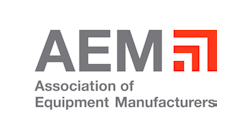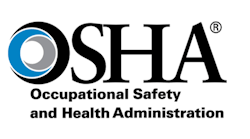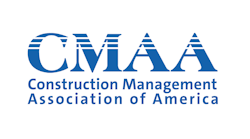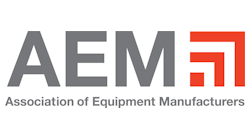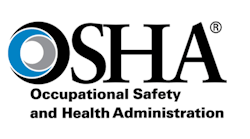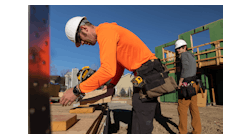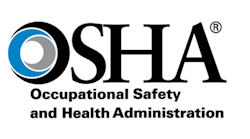Caterpillar endeavors to help contractors address safety challenges and mitigate risk via various means, notes Eric J. Herron, global technology marketing consultant, Construction Technology & Solutions–Caterpillar.
Those solutions center on making operators and pedestrians aware when people are in jeopardy of being struck by equipment and alerting operators to conditions that could cause machines to roll over, he says.
Caterpillar endeavors to help contractors address safety challenges and mitigate risk via various means, notes Eric J. Herron, global technology marketing consultant, Construction Technology & Solutions–Caterpillar. Those solutions center on making operators and pedestrians aware when people are in jeopardy of being struck by equipment and alerting operators to conditions that could cause machines to roll over, he says. [text_ad] Additionally, there is technology to help identify “potential collisions between our customers’ equipment and other equipment/objects and fatigued operators, alerting them and escalating operational concerns,” says Herron. Cat Connect DETECT technologies combine safety and monitoring systems to enhance operator awareness, he points out. Improved visibility on job sites can be attained through increasing awareness of the working area around the machine to give the operator the confidence to work more safely and efficiently and at maximum potential, he adds. “Cameras also can be used to assist operators with precise control of work tools where there is limited visibility to the tool itself,” says Herron. “Strategic placement of cameras can help the operator accurately guide the work tool. It all adds up to a safer, more productive operation. “By expanding your view of the working environment around your equipment, you can keep your people and assets safe,” adds Herron. “DETECT technologies include cameras and monitoring systems that expand the operator’s view of the immediate work area around the machine so you know exactly where other machines, objects, and people are for added safety in everyday operation.” To that end, Caterpillar offers a number of options. WAVS or Work Area Vision System uses one or more cameras and a color display to provide operators enhanced visibility of their surroundings. The most common configuration of WAVS is a single rear-vision camera. These systems are available on medium and large wheel loaders, off-highway trucks, motor graders, track-type tractors, and wheeled tractor scrapers. Object detection provides vital range and directional information, points out Herron. The DETECT system combines multiple cameras and can be combined with multiple radar sensors to detect objects within the critical zones around machines. This provides audible warnings and visual indicators that detail distance and location of detected objects. DETECT availability is on:- Motor graders: cameras, object detection, avoidance zones, and operator alerts.
- Excavators: cameras, height/depth alerts, avoidance zones, and operator alerts.
- Wheel loaders and off-highway trucks: cameras, object detection, and operator alerts.
- Articulated trucks: cameras and operator alerts.
- Scrapers, track-type tractors, asphalt compactors, and soil compactors: avoidance zones and operator alerts.
Additionally, there is technology to help identify “potential collisions between our customers’ equipment and other equipment/objects and fatigued operators, alerting them and escalating operational concerns,” says Herron.
Cat Connect DETECT technologies combine safety and monitoring systems to enhance operator awareness, he points out.
Improved visibility on job sites can be attained through increasing awareness of the working area around the machine to give the operator the confidence to work more safely and efficiently and at maximum potential, he adds.
“Cameras also can be used to assist operators with precise control of work tools where there is limited visibility to the tool itself,” says Herron. “Strategic placement of cameras can help the operator accurately guide the work tool. It all adds up to a safer, more productive operation.
“By expanding your view of the working environment around your equipment, you can keep your people and assets safe,” adds Herron. “DETECT technologies include cameras and monitoring systems that expand the operator’s view of the immediate work area around the machine so you know exactly where other machines, objects, and people are for added safety in everyday operation.”
To that end, Caterpillar offers a number of options.
WAVS or Work Area Vision System uses one or more cameras and a color display to provide operators enhanced visibility of their surroundings. The most common configuration of WAVS is a single rear-vision camera. These systems are available on medium and large wheel loaders, off-highway trucks, motor graders, track-type tractors, and wheeled tractor scrapers.
Object detection provides vital range and directional information, points out Herron.
The DETECT system combines multiple cameras and can be combined with multiple radar sensors to detect objects within the critical zones around machines. This provides audible warnings and visual indicators that detail distance and location of detected objects.
DETECT availability is on:
- Motor graders: cameras, object detection, avoidance zones, and operator alerts.
- Excavators: cameras, height/depth alerts, avoidance zones, and operator alerts.
- Wheel loaders and off-highway trucks: cameras, object detection, and operator alerts.
- Articulated trucks: cameras and operator alerts.
- Scrapers, track-type tractors, asphalt compactors, and soil compactors: avoidance zones and operator alerts.
Caterpillar’s radar systems detect machines or objects that fall within pre-defined zones.
“If that zone is entered, then there is a warning to the operator and a view on his camera so he understands somebody is in his zone,” says Herron.
Caterpillar has 3D safety on its grade control and compaction control with avoidance zones that can be set on a map.
“Once the machine enters that area or gets close to it, the operator will receive a warning on his display screen inside of the cab and also get an alert,” says Herron.
“That’s one way to prevent machines from driving into inaccessible areas or those that have poor underfoot conditions. Maybe you want to keep machines out of an area where there is a lot of pedestrian traffic. That’s one way a customer can set up his site.”
For night construction work, the cameras are able to view objects and personnel, but are limited by how much light is on the machine or the site, Herron points out.
“If the machine has LED or HID lights, it’s going to help quite a bit,” says Herron, adding that Caterpillar has updated many of its machines to have brighter light as an option.
“The avoidance zones that are drawn out on the maps are going to show up regardless if you’re in the dark or the light,” he adds.
Herron pointed out that safety technology not only protects operators and others on a construction site, but also allows them to “have more confidence in their production and efficiencies.
“They’re going to be less distracted so they can focus on their work,” he says. “Instead of an operator always looking around, behind or in front, looking around blind spots, if there is technology in place like cameras and radar systems, he’s giving that control over to the machine and can rely on the system to help him see where he can’t.”


